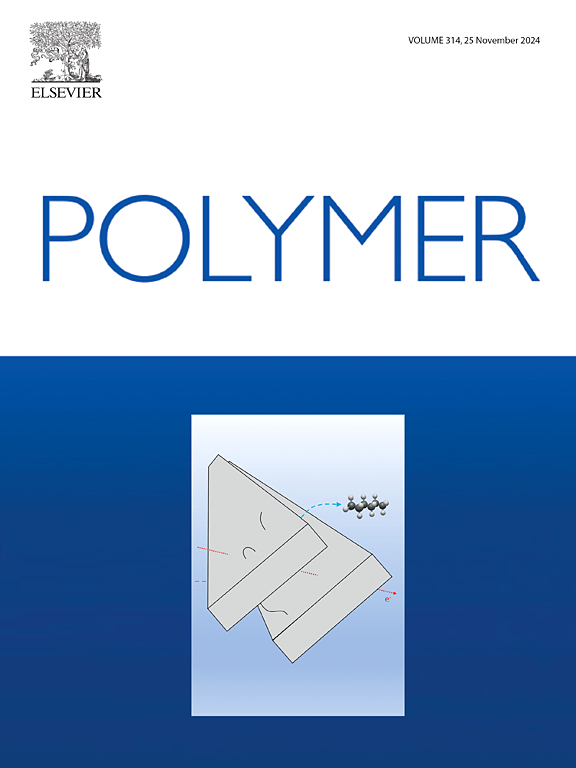Temperature- and time-dependent evolution of hydrogel network formed by thermoresponsive BCACB pentablock terpolymers: Effect of composition
IF 4.1
2区 化学
Q2 POLYMER SCIENCE
引用次数: 0
Abstract
Three thermoresponsive BCACB pentablock terpolymers, in which A, B, and C blocks were composed of hydrophilic oligo (ethylene glycol) methyl ether methacrylate (average molar mass = 300 g/mol, OEGMA300), hydrophobic n-butyl methacrylate (BuMA), and less-hydrophilic di(ethylene glycol) methyl ether methacrylate (DEGMA), respectively, were synthesised via one-pot group transfer polymerisation (GTP) with varied chemical compositions. In addition to the thermoresponsive behaviour, a time-dependent evolution was also observed in both microscopic structure and macroscopic performance of the thermo-induced hydrogels formed by these terpolymers. Combined analysis using time-resolved small angle X-ray scattering (TR-SAXS) and rheometry reveals that achieving a balanced ratio of hydrophobic and hydrophilic content is critical for configuring hydrogel networks with optimal performance and stability. Specifically, an excessive hydrophobic content leads to a gradual loss of network storage modulus (G′) over time, while an overwhelming hydrophilic content diminishes the formation of stable elastic-active intermicellar correlations, resulting in the lowest G’.


热响应性BCACB五嵌段三元共聚物形成的水凝胶网络的温度和时间依赖演化:组成的影响
通过一锅基团转移聚合(GTP)合成了三种具有不同化学成分的热响应性BCACB五嵌段三元聚合物,其中A、B和C嵌段分别由亲水性低聚(乙二醇)甲基丙烯酸甲酯(平均摩尔质量为300 g/mol, OEGMA300)、疏水性甲基丙烯酸正丁酯(BuMA)和不亲水性二(乙二醇)甲基丙烯酸甲酯(DEGMA)组成。除了热响应行为外,这些三聚体形成的热诱导水凝胶的微观结构和宏观性能也随时间变化。结合时间分辨小角x射线散射(TR-SAXS)和流变学分析表明,实现疏水和亲水含量的平衡比例对于配置具有最佳性能和稳定性的水凝胶网络至关重要。具体来说,过量的疏水含量会导致网络存储模量(G′)随着时间的推移逐渐损失,而过量的亲水含量会减少稳定的弹性活性胶束间相关性的形成,导致最低的G′。
本文章由计算机程序翻译,如有差异,请以英文原文为准。
求助全文
约1分钟内获得全文
求助全文
来源期刊

Polymer
化学-高分子科学
CiteScore
7.90
自引率
8.70%
发文量
959
审稿时长
32 days
期刊介绍:
Polymer is an interdisciplinary journal dedicated to publishing innovative and significant advances in Polymer Physics, Chemistry and Technology. We welcome submissions on polymer hybrids, nanocomposites, characterisation and self-assembly. Polymer also publishes work on the technological application of polymers in energy and optoelectronics.
The main scope is covered but not limited to the following core areas:
Polymer Materials
Nanocomposites and hybrid nanomaterials
Polymer blends, films, fibres, networks and porous materials
Physical Characterization
Characterisation, modelling and simulation* of molecular and materials properties in bulk, solution, and thin films
Polymer Engineering
Advanced multiscale processing methods
Polymer Synthesis, Modification and Self-assembly
Including designer polymer architectures, mechanisms and kinetics, and supramolecular polymerization
Technological Applications
Polymers for energy generation and storage
Polymer membranes for separation technology
Polymers for opto- and microelectronics.
 求助内容:
求助内容: 应助结果提醒方式:
应助结果提醒方式:


